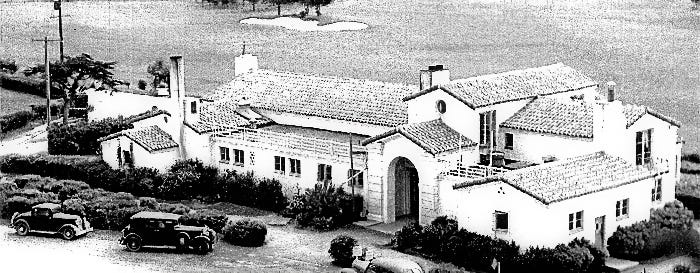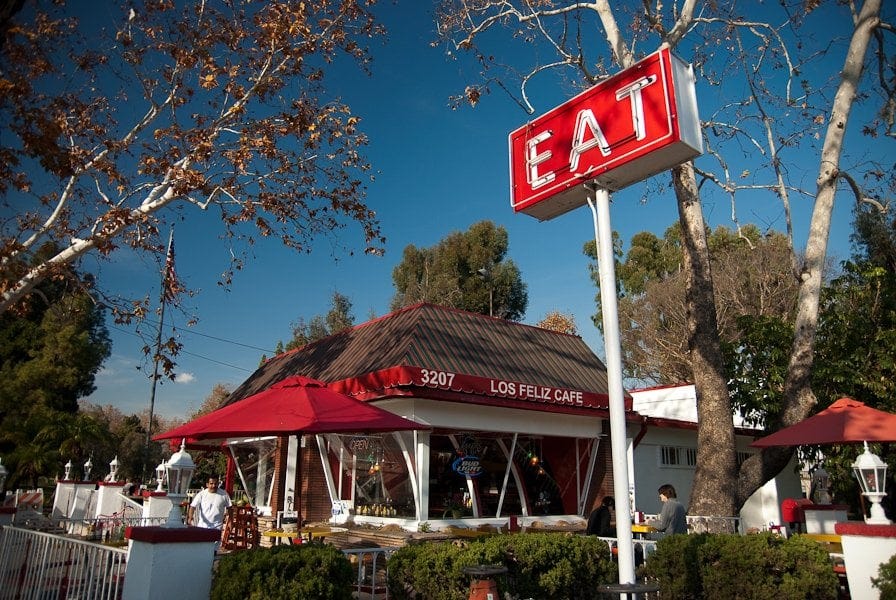Nobody Is Having Dinner at the Golf Course
Golf for non-golfers: hidden clubhouses, closing at sunset, all while leaving money and influence on the table.
Updates: I will be compiling a list of relevant restaurants & pubs at the end of the article as people inform me of their own experiences.
Today I’m starting the first in a series I’m calling Golf for Non-golfers. It will be an analysis of the economic and political interactions between the golf community and their neighbors, the greater (non-golfing) community. While I plan to get into serious issues of land use, today I want to keep things light. Let’s talk about food.
The clubhouse, to me, is a necessary yet muddled thing. It exists as a place to pay your greens fee, but the empty restaurant attached has always shocked me. At the end of the day, the clubhouse provides revenue for the golf course, however, in urban environments, I see these resources as deeply under-utilized at best, and actively undermining the our public courses at worst.
Typically, a clubhouse will include a pro-shop, restrooms/lockers, some sort of drinking/dining facilities, and perhaps an event space.1 At the very bare bones, a golf course merely needs a kiosk near the first tee. These remnants still exists in the Starter Hut on the Old Course, and in the Green Hut on the first tee of the Bruntsfield Links.
The starter hut has become the pro shop, and for popular destinations, the pro shop doubles as a gift shop. Still, there is often an awkward restaurant and bar that stands out. Yes, people spending the day playing golf will need food, but the large restaurant space at many courses is always empty. The opportunity cost here continues to astound me.
Breakfast and lunch can easily be targeted at the grab-and-go golfers, but dinner seems to be the only meal that would utilize these large dining environments at courses. Most urban courses close everything at the same time. It’s obvious why, right? It’s a golf course, not a restaurant. Who’s going to have dinner at a golf course?
I see this as deeply backward. The existing restaurant and bar is effectively a sunk cost. It could easily out compete its neighbors by simply operating effectively rent-free, yet nobody wants to have dinner at a golf course because it’s a golf course, right? A vastly superior paradigm should be a restaurant adjacent to a golf course. Even better, a golf course that serves it’s community through their restaurant. The key here, is making the clubhouse a visible and accessible location for welcoming the community.
Let’s look at some places where the parking lots fill up with non-golfers. Two case studies are public Mackenzie courses: Sharp Park and Northwood, another is literally the restaurant attached to a pitch-and-putt in Los Angeles.2
First up, Sharp Park Restaurant.

Open till 8pm Friday-Saturday, the restaurant at Sharp Park is effectively an old roadhouse. It is a popular destination for the older locals, golfers or not. The restaurant is both adjacent to the Pacific Coast Highway 1, and the course is effectively in the center of Pacifica California. I’ve been there multiple times, it’s cute, but though only somewhat popular on yelp. It’s definitely an old school vibe, but they lean into it, and it works.

Next have a look at Northwood Restaurant (open till 8pm Monday-Saturday). This place is attached to Northwood Golf Course. It’s fairly popular, here are the yelp reviews. The restaurant is on historic CA route 116, between the popular destinations of Guernville and Monte Rio. Vacationers often drop in because it’s prominently visible along the road, and it’s interior draws from the cabin in the redwoods feel of the general area.

Finally, there is Los Feliz Café is a popular breakfast & lunch spot in the Atwater Village neighborhood, in Los Angeles. It is adjacent to the Los Feliz Par 3 Course and while this place does close around sunset, it’s a popular breakfast spot where the pancakes and french toast are stacked high. The outdoor seating by the green space of the course can be a respite from the overwhelming traffic of Los Angeles. Again, it benefits from its visible, cutesy neon sign that is welcoming to the general public.
Here’s the rub: what do all three of these locations have in common? The are street facing, in popular with the locals, and all use the adjacent open space to welcome non-golfers. Most of them do not tie their restaurants to their courses as a direct form of branding. They exist as public accommodations, not just serving the people golfing. They are restaurants that are next to, not for, the golf course.
Serving the general public is important. Why does this matter? For public golf, these issues are pressing, and will continue to grow. In an era of housing scarcity, rapidly rising land values, where municipal golf courses are struggling to justify their own existence, creating added-value to non-golfers should be seriously considered, if only because of the way the political system works. Operating a popular restaurant, that happens to be attached to a public golf course, creates goodwill to the greater community, and actually presents something the general public will lose if the local golf course disappears, instead of them seeing the land under the golf course as not serving the community at all.
In this light, the typical dynamic we see is kind of ridiculous. We have the vast majority of public courses with large clubhouses tucked away from the street. Literally hidden, out of view from the general public, as some idea of escaping the urban environment for some bucolic paradise. Only to then provide extremely large, typically empty, dining facilities serving no one, save for the occasional club award presentation. Adding insult to injury, some courses try and make up for this bizzare business model by trying to extract monopoly rents in over-priced food and beverages. It’s fair play, but it’s short-sighted.
Are there any solutions? I don’t see many in the short run. Most of our public courses are path-dependent, and their existing investments and strategies cannot easily be changed. Switching clubhouse location to be street-facing and welcoming may not be a serious proposition for existing courses. Going forward, however, we could make this type of welcoming clubhouse location a priority for muni courses, especially those going through serious renovation.
It may also be possible to lease existing dining space to possible other businesses where the kitchen is important, but tangential; e.g. breweries. Breweries will often operate a pub adjacent to their production, but the main business is wholesale. If courses were able to lease the extra space in this situation, each party can take advantage of the space when the other is not actively using it.3
This may simple present too much complication for existing golf course operators, but in principle, if we want to preserve our public courses we need to focus on maximizing the value of the space, not just for golfers, but for the general public. Doing that means focusing on treating the restaurant facilities as genuine restaurants, that are visible and accessible to everyone, not as awkward appendices tucked away that close when the sun goes down.
List of relevant restraunts & pubs with an established community presence:
Sharp Park Restaurant: Sharp Park Golf Course, Pacifica, CA
Northwood Restaurant: Northwood Golf Club, Monte Rio, CA
Los Feliz Café: Los Feliz Par 3 Course, Los Angeles, CA
The Sand Trap Pub: Gearhart Golf Links, Gearhart, OR
The Grill at Point Pinos: Pacific Grove Golf Links, Pacific Grove, CA
I know full well that there is much more to this of course, a garage for mowers, fuel storage, etc., but these are typically not customer facing, and needn’t be positioned at the clubhouse, so for the sake of my argument here, I’ll ignore them.
These aren’t superb examples, in fact, I’ve honestly never been to a course restaurant that outshines the course, but there are some course restaurants that non-golfers seem to enjoy.
Restaurants focused on deliveries, such as pizza restaurants, are another option.





While a bit off topic I totally agree that overall clubhouses are a waste of money, effort and attention. It astounds me when someone critiques a golf course and mentions the clubhouse (I am speaking only to public golf courses). Why does a clubhouse have any bearing on what you thought of the golf course and same goes for a restaurant. All of that is golf adjacent at best.
The golf course is an executive and known locally as "The Mats" because you hit off range mats on every tee, but Newport Beach Golf Course in Newport Beach, CA has a pizza restaurant called Original Pizza that is probably slightly more popular than the course. They just moved locations and moved into the restaurant spot at the course, which can be seen from the main road, is next to a fully lit driving range, and was already somewhat popular before moving in. This could be another option, to have other restaurants take over the clubhouse restaurant space and simply rent the space, bringing in their already established following to the course. Lots of ghost kitchens popping up, why not slot something like that into one of these spaces as well?